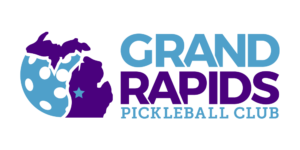ORIGIN AND GROWTH OF GRAND RAPIDS PICKLEBALL
Barb and Dick Draigh were responsible for the genesis of what is now the Grand Rapids Pickleball Club. When asked to explain why and how that happened, Dick wrote:
“Barb and I first discovered pickleball while in Florida in early 2008. After returning home in April, I was anxious to find a place in Grand Rapids to play and found that no one seemed to have heard of the game. I stopped in at the Forest Hills Community Education office after seeing an ad for tennis in one of their publications.
The woman I talked to was enthused about helping me. Forest Hills had a good working relationship with East Hills Athletic Club at the time, and I was referred to Paula Spagnola at East Hills. Barb and I went to see Paula later that day and were met enthusiastically. Paula loved the idea, but they wanted me to become an employee rather than a volunteer. The hitch was that I would have to sign a non-compete contract and I was reluctant to do that since I had signed up as a pickleball ambassador with the USAPA and wanted to promote the game in GR. However, I finally agreed since I wanted to get a “foot in the door.” Shortly after that, lines were painted for three courts in a multipurpose area, starter kits were ordered, and the club advertised the new program including getting a front page, Sports Section, article in the Grand Rapids Press in 2008.
The first day, only two women had signed up for the class, but it was a start! (One of those two pulled a calf muscle after about 15 minutes, hobbled off the court, and I never saw her again.) Attendance slowly grew to as many as 23 players on any given day, twice a week. From that inauspicious start I’m proud to say that pickleball has really ballooned in GR.”
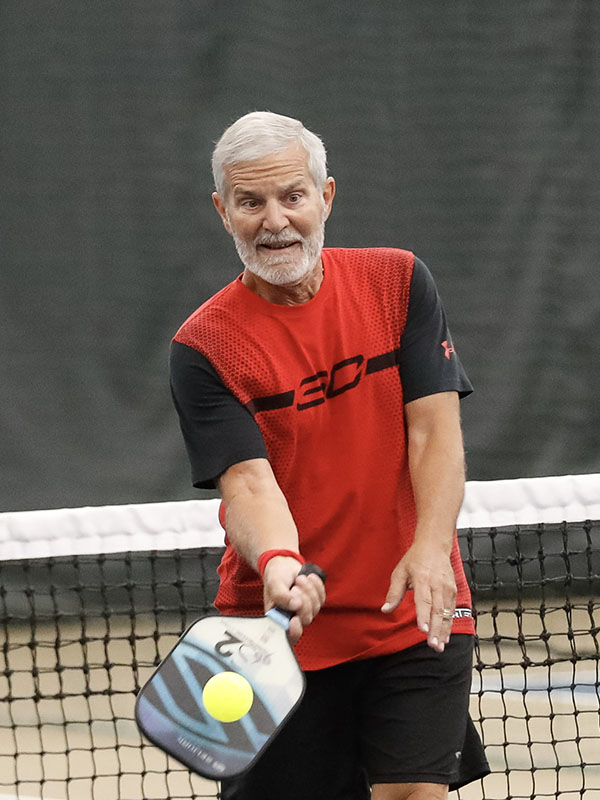
For the first couple of years the participation at East Hills grew slowly but steadily. Sometimes only one or two courts were being used and having to wait to play was unusual. The original group also included a number of “snowbirds” so, especially in the winter, having enough people to play was a little challenging. Those who played were responsible for setting up and taking down the nets and even occasionally had to get the lights turned on. The courts were outside of the child care area so sometimes wandering children were a concern and on the opposite side of the multipurpose area were kids playing basketball so stray basketballs could interfere with play as well. East Hills did not charge a membership fee to play pickleball and developed a punch card system which amounted to about $7 a time to play. Over the years they offered more and more times for play and it was not unusual to play for three or four hours. As the number of players increased, one court was also set up in another room but it was not an ideal space.
In 2009 outdoor courts were lined at Ada Township Park and there was play also at Garfield Park, the Downtown YMCA and thru the Kentwood Rec Department. Also conversations were started to develop an outdoor facility with the City of Grand Rapids Parks and Recreation Department at Belknap Park. (See Belknap Park Development below)
Around 2011 rumors circulated that East Hills might be sold or closed down. The group of players was now getting larger and the group included people from all over the Grand Rapids Metro area so there was a concerted effort to look for other playing venues. Arrangements were made with the Spartan YMCA, which put up four courts, but the space was not ideal because the courts were so close together. Also after a while the Y required people to be members, which was problematic for a number of people because they would only use the facilities half the year and the Y was quite far from where many people lived.
After the second Meijer State Games (2012) were held at the MVP Fieldhouse, the leadership there became supportive of getting involved in regular play at their facility. As the number of players has grown more courts (up to 15) and playing times have been made available. Additionally three ladder leagues were established. In 2013 both a Tuesday morning and Friday night ladder league were started, and a Thursdays womens’ play started in 2017. By the end of 2017 daily play starting at 9 am often would find the majority of courts filled with people waiting.
A number of venues with a variety of playing times are now available in the area and are listed on the GR Pickleball website (grpickleball.com).
MAJOR TOURNAMENTS
Dick Draigh was instrumental in establishing pickleball as part of the State Games of Michigan. He explained,
“The State Games of Michigan, sponsored by Meijer, and administered by the West Michigan Sports Commission, came into being in 2010 with the first games played in June that year. Dick Manaseri, who was the Regional USAPA Ambassador at that time, learned of the Games early that year and contacted the Sports Commission to apply for admission to hold a pickleball tournament as part of the Games. After meeting with the Commission, we were approved, but we were too late for 2010. Our first tournament was held in June of 2011, with 115 players competing in the fieldhouse of Cornerstone University. Dick Draigh was the tournament director and local pickleball players served in a variety of volunteer capacities. That event was greeted with a lot of enthusiasm from the players, and it was obvious that it would grow in future years, but we needed to find a better, larger venue. MVP Fieldhouse, now owned by MSA, proved to be an outstanding venue, and for the next three years Dick Draigh continued to direct the annual tournament in mid June at MVP Fieldhouse. Over those three years the tournament grew to about 250 happy players over three days! It was a sanctioned tournament but players were not required to be USAPA members. Each year, roughly 80% of the participants were from Michigan, with the other 20% coming from as far away as Florida, New York, Arizona, Washington state, Texas, Louisiana, and other closer states.” John Schowalter was instrumental supporting the tournament director with software and facilities arrangements, from 2011-2017.
In 2015 there were 262 players for the 3 days of the State Games of Michigan.
This was the first year all players were required to be USAPA members for a sanctioned tournament. Due to this USAPA membership restriction, it was expected that registration to be down around 200 – 225. It was a surprise when registration exceeded the prior year. In 2016 there were 299 players for the three day State Games of Michigan
In 2014 Keith Wolverton and John Schowalter promoted including pickleball in the State Games of America to be held in Grand Rapids in August 2017. They met with the West Michigan Sports Commission and the State Games of American site selection committee. The previous SGA were in Nebraska and attracted less than 200 pickleball players. We indicated that we would be able to attract 300-400 players. Grand Rapids subsequently won this bid against two or three other cities in the USA. Because State Games of America was scheduled for 2017, State Games of Michigan (normally held in June) was not run.
Planning began in July 2016 when Keith and John initially met with MSA management, who had taken over the Fieldhouse in June of 2016. Registration for the State Games of Michigan normally began in March of the respective year. However, the State Games of America wanted registration to be begin on September 1, 2016. It was expected there would be anywhere from 400-500 players, primarily due to out-of-state participants. Planning included an extra day at one facility. However, by the end of December it was already known that the number of players was going to exceed player limits at the Fieldhouse. West Michigan Sports Commission negotiated with MSA for play at MSA Woodland. By the end of January, new registered players were put on a wait list as the two facilities were maxed out. Ultimately there were 601 players involved in the 4-day, 2-site event. Many volunteers from the Grand Rapids area assisted in a variety of ways. This was the first tournament where there was active solicitation of outside vendors, had a pre-tournament party, and of course, had to double everything (admin, hospitality, referees, etc) due to double locations.
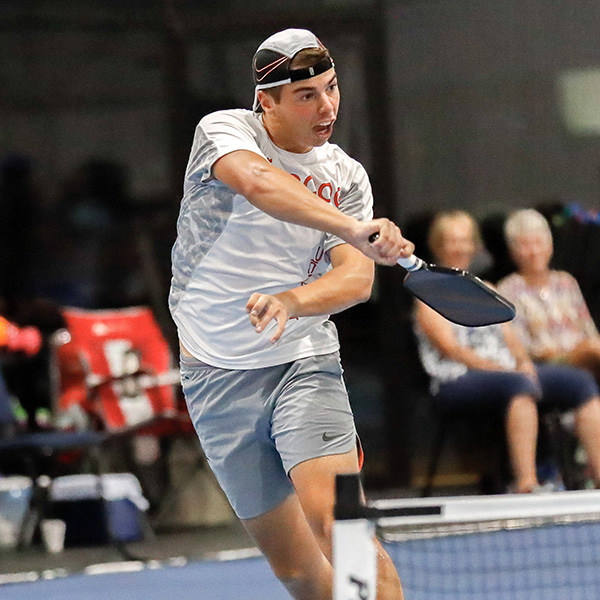
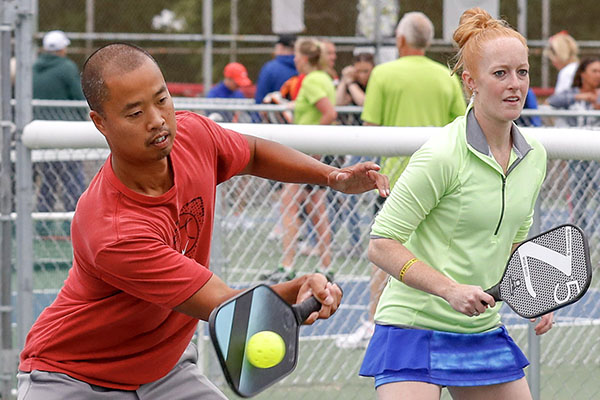
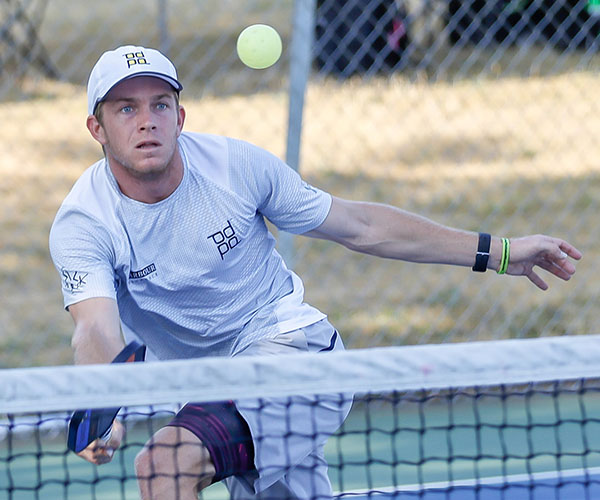
BELKNAP PARK DEVELOPMENT
2009
Don Bont and John Schowalter reviewed several City parks that were possible for pickleball. John Judnich was the contact at the City and continues to be the advocate of pickleball for the City. Belknap Park was the obvious choice with the main benefit being; parking, lighting, surface condition and limited residential neighbor (to limit noise complaints).
The City of Grand Rapids Parks and Recreation Department agreed to allow a group to chalk two tennis courts at Belkap park. The tennis nets were used as the pickleball nets by holding down the sides with concrete blocks to make the pickleball nets meet height standards. Two courts were chalked and by the end of summer four tennis courts were being used. Wednesday was the night of weekly play.
2010
Rosa Park Pickleball Clinic.
In 2010 John Schowalter and others contacted the City of Grand Rapids and worked with John Judnich in the Parks and Recreation Department and set up a demonstration in Rosa Park in downtown Grand Rapids. The event was held over the noon lunch hour and attracted a lot of spectators. It resulted in recruiting some new people for the sport and began a solid vision for the sport with the City.
Instead of chalking the courts, red duct tape was used to define the courts on the tennis courts at Belknap park. Several local players conducted lessons for new players during the summer and the numbers grew.
2011
In the summer the City of Grand Rapids painted the court’s outlines rather than tape. By the end of the summer play had increased substantially. Many of the players (55) that were working with Dick Draigh at East Hills were now coming to play outdoors.
Every game was documented during the summer to build a case for asking for conversion of some of the tennis courts to permanent pickleball courts. In the winter John Schowalter and team contacted John Judnich from the Parks and Recreation Department with that request and he agreed to meet in the Spring of 2012 to let the group know.
2012
When the “snowbirds returned from the west and south, they met with the City in May and were given permission to develop the first six courts. The City indicated it had no money for the project and we would have to raise the cash. They asked: how long did we estimate it would take to raise the money? The group told them there would be play on July 4th. They asked: what year? The group responded 2012. The City officials thought they were nuts.
The group set about hiring and scheduling contractors before raising the funds and took the approach if the courts were built, they would be funded. Don Bont, Dan and Carol Woods, Dan and Carol Schultz, Don and Kathy Anderson, and the Schowalters and a few others patched every pop stone and crack in the courts to be surfaced.
Jim and Kathy White arranged for the donations to flow through the local Rotary Club so those who made a donation could get a tax deduction. The Rotary Club of Grand Rapids also provided a $2,000 matching grant. Don Bont and John Schowalter secured several large donations from individuals and foundations—Pioneer Construction, Kate and Richard Wolters Foundation, Grand Rapids Fence Co. and Allegra Marketing— that became the base for countless donations from individuals. Most donations were $50 to $500 and by July the estimated $22,000 needed had been raised.
Play actually started by the end of July (the paving company had some scheduling challenges which was the cause for missing the July 4 target date). The official Grand Opening was the evening of August 29, 2012. Mayor George Heartwell gave remarks, as well as organizers and sponsors. There was a player exhibition match between 5.0 players Jim and Yvonne Hackenberg and Jason Parr and Carolyn Ebbinghaus. The evening concluded with hot dogs and brats on the grill.
2013 to 2017
Courts 7 & 8 were added in 2014, funded by the Grand Rapids Parks and Recreation Park improvement fund.
Courts 9 & 10 were added in 2015, and temporary lines were put down on the two remaining tennis courts, paid for by the Grand Rapids Pickleball Club fundraiser.
Concrete Benches were funded through a gift coordinated by Jeff Powers.
In 2016 approximately $30,000 was raised for two new dedicated courts with fencing, replaced lower 6 ft of tall fences, new windscreens, message board and new storage shed.
In 2017 the Club embarked on another capital campaign for $25,000 to fund a pavilion and conversion of tennis courts to pickleball courts 11-14. The pavilion is to be named after one of the original pickleball players and former vice president of the club, Peggy Reed. Peggy’s family provided a matching grant to stimulate funding, which was successful as all the monies needed were raised and actual beginning phases of construction were started at the end of 2017.
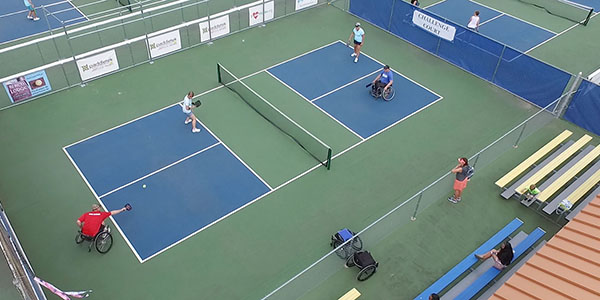

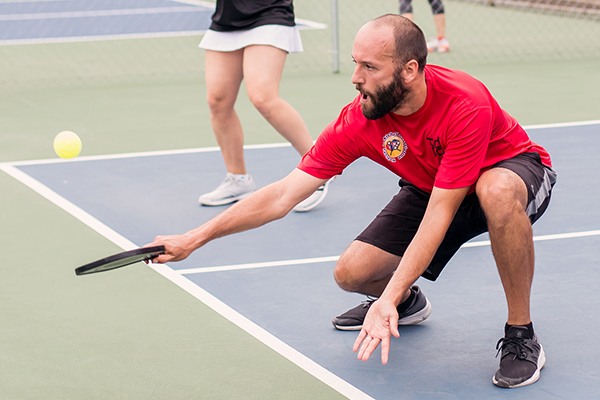
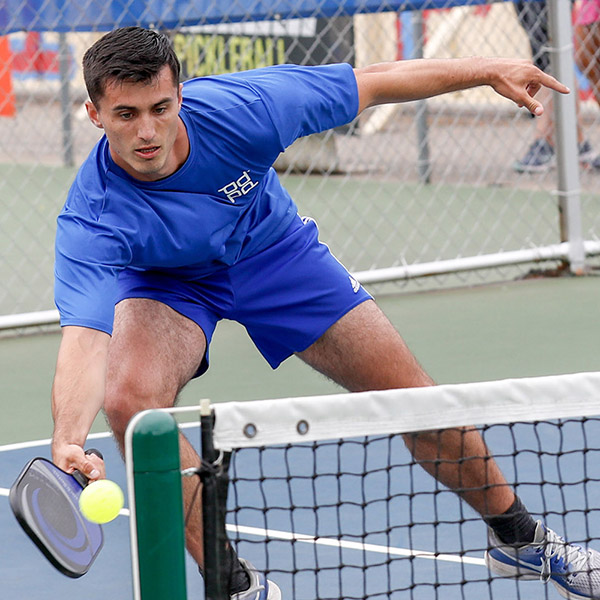
GRAND RAPIDS PICKLEBALL CLUB
By 2011 it was becoming obvious to a number of people that a formal organization needed to be developed for five primary purposes:
- To have a master list of players for communication purposes
- To support fundraising efforts, especially for Belknap Park
- To support tournaments—both local and regional
- To provide social activities
- To promote pickleball in the area
In June 2012 legalzoom.com was used to form a 501C-7 non-profit corporation, which is a sports oriented designation. John Schowalter was listed as President, Don Bont Vice President and Jeanne Schowalter, Treasurer. In November 2014 the Club switched to a 501C-3 designation which allowed for charitable donations. Bob Fraser, a retired attorney, initiated the by-law process.
The club subsequently has grown with strong leadership serving the membership. Membership in 2015-2016 was 266; 2016-2017 495 and 2017 thru December is 605. April 2021 was 629, June 2022 was 900, July 2022 1010 and Jan 2023 1171.
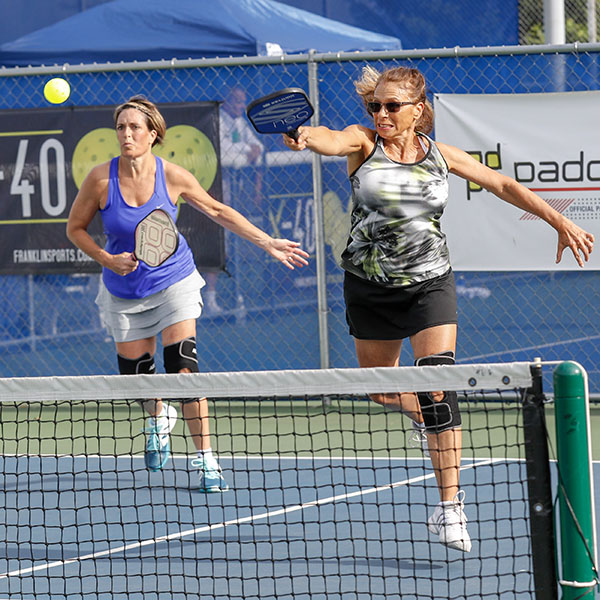
DRAIGH AWARD
The Draigh Award came into being in the summer of 2014. The Draighs held a party in mid-August of 2014 for the major State Games tournament volunteers at their cottage on Little Sand Lake in Grant. They were surprised when they were presented with a plaque which expressed the GR pickleball Club’s gratitude for all their efforts. Additionally it was announced that there would be a trophy, which came to be known as the Draigh Award, which would be given annually based on Club member vote to people who contributed to the growth and work of the Pickleball Club. Barb and Dick were instrumental in developing the criteria for the award. Dick was later honored to be able to present the trophy to the first recipients, John and Jeanne Schowalter, at a ceremony at Belknap Park. The names of subsequent winners have been engraved on the trophy. For more information about the Draigh Award go to the Grand Rapids Pickleball Club Website.
From the beginning the pickleball players have been a friendly and welcoming group. If someone new shows up—whether they know how to play or are a beginner—they are warmly welcomed and someone will explain the game and engage them in play. Most people catch on quickly and many now are 4+ players. Age and gender have also not been an issue. Especially at the start mixed doubles was the norm and people would bring their grandchildren to play along with some of the group that were in their 80’s.
Because of that camaraderie throughout the year potlucks with spouses/significant others regularly happened being hosted by Jim and Kathy White, Keith and Kathy Wolverton, John and Jeanne Scholwalter, and Lamar and Terri Schrock. As the group has gotten larger these types of events have been held at Belknap or MVP/MSA. Also there have been a number of internal tournaments organized, especially an annual Fun Tournament coordinated by Larry and Cynda Walters.
Pickleball is such a self-promoting game that more and more venues are sprouting up all over the Grand Rapids area. As the Club looks to the future, promotion of the sport and growth in membership will continue to be a priority but also managing and organizing play to meet the needs of the different skill levels of participants is a top priority.
The writing of the history was facilitated and edited by Kathy White with significant input provided by Dick Draigh, John Schowalter, Bob Trout and Keith Wolverton.
